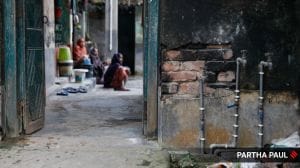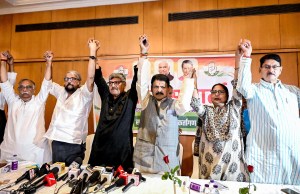Nagaland ofers a new generation of troops
RANIKHET, JULY 13: Earlier this year, 19-year-old Moningam Anal wrote to his father telling him that he wanted to join the Army. From the...

RANIKHET, JULY 13: Earlier this year, 19-year-old Moningam Anal wrote to his father telling him that he wanted to join the Army. From the Kashmir Valley, his father wrote back: “Join and do well. Work hard, go through the training properly and become a good soldier.”
Having got his father’s blessings, Moningam promptly boarded a train, made the long journey from Nagaland to Ranikhet, gave his tests and joined the Kumaon Regimental Centre training programme. Today he struggles to get his marching and rope climbing right. But he is determined he will do his father, a soldier in 2 Naga, proud.
Five months back, when Anal put his father’s letter in his pocket and boarded a train to Ranikhet, there were others like him who were also leaving their homes. S Alinkhup packed his favourite heavy metal band, Iron Maiden’s cassette in his bag and started his journey. Sapongcahem Sangtam just carried with him the memory of his father, who died fighting in the Valley.
At various stages of their training, Anal,Sangtam and Alinkhup are a determined lot. They can recount exactly how soldiers from 1 Naga fought the Kargil battle in its initial stages. They are aware that seven people died and 40 were wounded during the initial assault. And they all want to be a part of the “gallant tradition” of the Naga Regiment.
“Make us soldiers quickly, they all tell me,” says Naik Subedar C Chingman Konyak, an instructor. “This is the one thing I have been hearing from the new recruits ever since the Kargil conflict began. They all want a piece of the action and I frequently have to sit them down and tell to concentrate on the training.”
Raised in November 1970, the Naga Regiment is affiliated to the Kumaon Regiment. “The regiment was raised to bring the people of Nagaland into the mainstream through the Army,” says Brig Rajeshwar Singh, commandant of the Kumaon Regimental Centre. “The area has been plagued by insurgency since 1956 and the youth was getting involved in it. But now, since the regiment was raised, wehave numerous instances of gallantry and the boys from Nagaland have shown exemplary courage under fire.”
Handling a dah (knife) is something the Nagas know. Surviving in tough terrain is a way of life for them back home. And at the training centre, they are honing their skills, learning to use the gun while sharpening their use of the dah.
“They are extremely strong people,” says Lt Gen R N Mahajan, the first commanding officer of 1 Naga. “Traditionally they are hunters and live in very harsh terrain. All their villages are right on top of the mountain and the path leading up is always vertical, going straight up the rock face. Their environment makes them tough soldiers.”
Twenty one-year-old Hnunthung Anal made his first train journey out of Nagaland to continue the tradition of the Naga soldier. His uncle is already serving in 2 Naga.
His face lights up with dimpled smile when he talks about home, his mother, younger brother. He admits he feels homesick at times and misses hisfamily. “But I have no second thoughts about coming here,” he says. “For me joining the Naga Regiment will mean leading a decent life and I’ll be serving my country. I didn’t take my final year exams because I wanted to do this.”
The only hurdle for the recruits is the language. As they learn to run, climb, fire and win over the enemy, they also learn to speak Hindi. “Language is our only problem,” says D Angkhan. “After my classes, I can now talk and understand a bit. Otherwise, I can talk in English but that is not always the language people in different areas speak.”
Angkhan and his classmate K Andrew, both 18-years-old, took the decision to join the Army together. After finishing school, they thought about their future. “There is nothing much we could have done back home,” Andrew says. “For years we have lived with insurgency and anonymity. There was the choice of higher education but I wanted to do something worthwhile. Also, I wanted to do something for my country.”
The recruits admitthat there have been many occasions when they have had to fight off the label of `foreigner’ or answer queries about where their home is located on the map. “It used to bother us,” admits Angkhan. “But now people will know. Some of the most courageous assaults in the Kargil conflict have been undertaken by the Naga unit posted there. Capt Nongrum made the supreme sacrifice. His is the example we would like to follow.”
Sangtam lost his father in the Kargil conflict. Now he wants to take his place and complete the task. “My mother didn’t say no,” he says quietly. “We all know that my father died for the country and there is no better way to die.” Sangtam is 17.





- 01
- 02
- 03
- 04
- 05


























